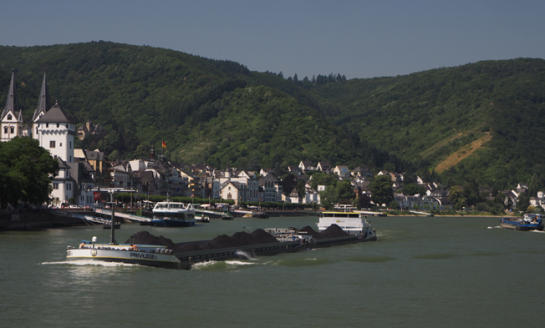Do you, though?
In 2016, German electricity was 6.9% solar and 14.3% wind.


That’s all of the good news. The rest is bad. German solar generated 3% less than in 2015 and build-out has effectively flat-lined. Wind generated 1.5% less, and the cost of the necessary new transmission capacity has increased to €15 billion. Deeper analysis can be found here.
Meanwhile, emissions have risen…
#Germany‘s #CO2 #emissions rise in 2016 despite #coal use drop https://t.co/bdYBZamayA #Energiewende #NaturalGas @bdew_ev pic.twitter.com/4nTNpI5Odq
— Clean Energy Wire (@cleanenergywire) December 20, 2016
…with more coal still burned in 2016 than in 2009, 2010 or 2011.

Around 2,800 MW of new lignite-fired power capacity came online in 2012, which benefit from adundant supplies of brown coal in Germany.
But that was three years ago, right? Surely things have improved, right? Wrong.
#Energiewende officially debunked. Germany opens new lignite mine. https://t.co/Q1CaMvr9FR
— Elstatistik.se (@Elstatistik) December 23, 2016
.@solarpapst @MSR_Future @PPchef @ClimateReality @CleantechFIN Yes, and if Germany had kept its nuclear it could have cut lignite use 42%.
— Michael Liebreich (@MLiebreich) May 9, 2016
Germany has inadvertantly demonstrated that there are limits with favoured modern energy sources at industrialised nation-scale, despite overwhelming public and government support. At relatively high but still limited penetration, the addition rate of intermittent renewable capacity dramatically slows and variations in weather can be seen to impact generation share on an annual (not just daily to seasonal) timescale. Some critics might call this a failure, but it’s actually a supremely valuable lesson for the rest of the world.
And to answer the question at the top: yes, renewable energy share was marginally higher. Whereever you see that claim reported, you will know it was thanks to increased biomass and hydropower output.
I fully reiterate what I wrote a year ago. Germany, where stale anti-nuclear propaganda is taught in schools, needs to start trying to face the idea of restarting its reactors. And the sooner, the better.



Enthusiasts fail to grasp the concept of a niche which stops growing when the marginal net benefit tapers off. Otherwise we’d be exclusively eating quinoa instead of cereal based food. It’s quaint how they point out occasional days of high wind or solar but remain silent in overcast weeks and wind lulls. Another quirk is to repeatedly stay how cheap wind and solar has become. In that case they won’t need the $90 per Mwh subsidy to be extended when the RET expires in 2020.
Yesterday when Adelaide hit 41C I jotted down the generation mix at one point in the mid afternoon. It was gas 1618 MW + liquid fuel 121 MW + wind 375 MW + small solar 157 MW = 2271 MW. The first two contributed over 76%. The spot price for SA gas was around $10/GJ.
Where was wind power when it was needed most? Solar seems to confirm the idea that while 25% of SA homes have PV some 80% have aircon. What happens when gas is even more expensive?
The timing of the nuclear phase out was a mistake. That said, nuclear is not an ideal energy source in a renewable age. A quarter of their energy capacity is now intermittent, which means they need complementary energy sources that can be turned on and off in fractions of a day. Nuclear reactors can’t do that. You can’t power a city at windless or dark times and then stop the fuel burn when the sun shines or the wind blows.
Really, the only fuel that can do that is natural gas. Germany needs to phase out coal and replace it with combined solar/wind/natural gas.
All you are saying is that renewables are therefore not suitable to get us beyond the fossil fuel age. But this is urgently required if we want to keep a semblance of a habitable planet.
Fossil fuel merchants know this and have therefore been spinning the “renewables are the future” dross for decades.
CNBC has a renewables-ramping series on “sustainable energy” sponsored by Total, and Statoil keeps running adverts in the Guardian suggesting that the UK should go all in on wind power. The Australian coal mining union CFMEU looks so much forward to a renewable future, but in the royal comission submission they were strictly against any nuclear power.
Fresh analysis has been provided by Environmental Progress. German emissions continue their steady increase.
http://www.environmentalprogress.org/big-news/2017/1/13/breaking-german-emissions-increase-in-2016-for-second-year-in-a-row-due-to-nuclear-closure
If SA is Germany-lite I guess the difference is that SA fills the gaps with gas fired electricity and imports rather than local coal like Germany. Trouble is SA gas supplies have been flogged for decades e.g Moomba-Adelaide from 1969. Hence the desire for drilling offshore or fracking in neighbouring states. Batteries as replacement for gas peaker plants seems to have gone flat. SA needs ~500 MW of local non-fossil dispatchable power.